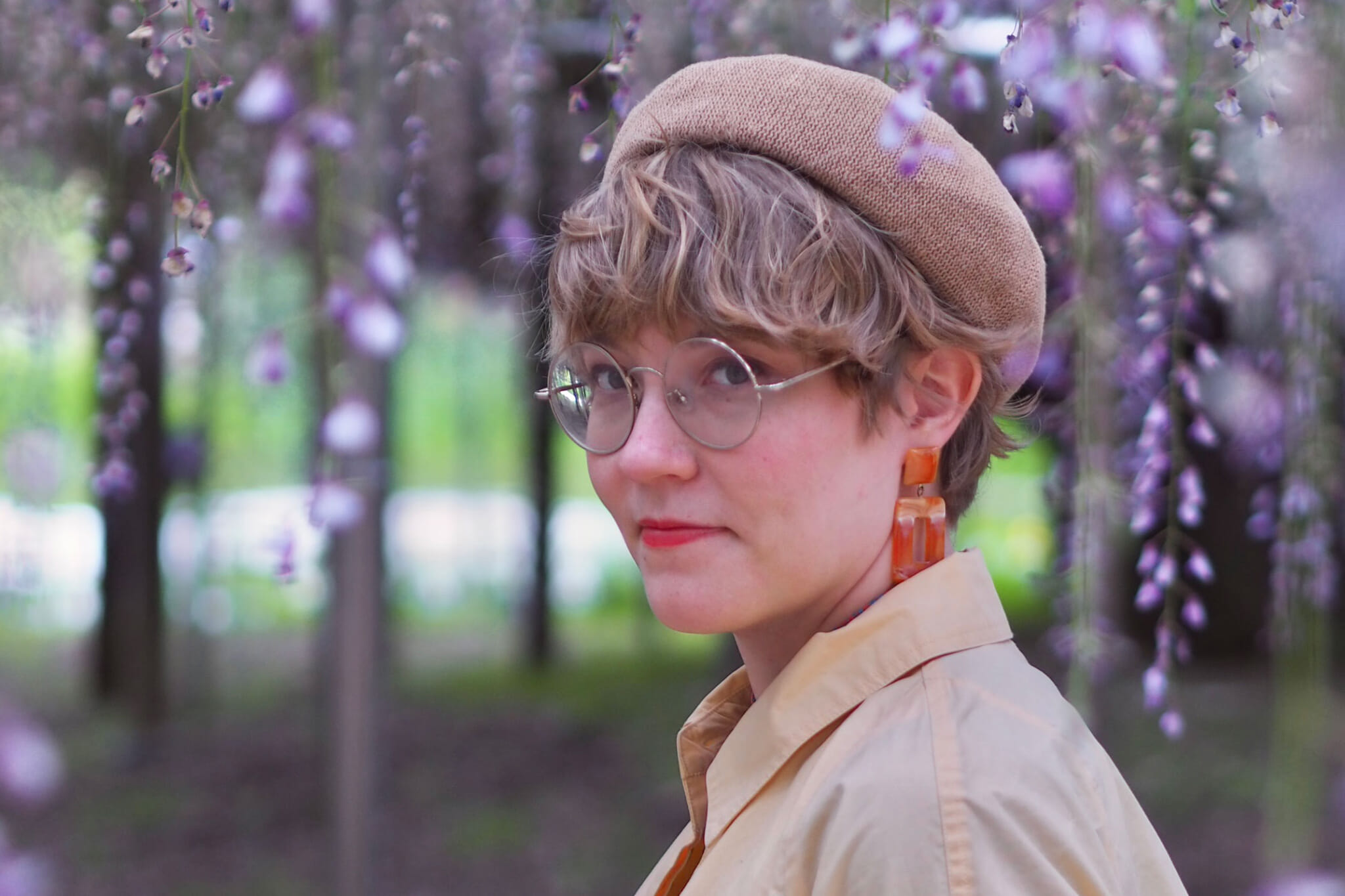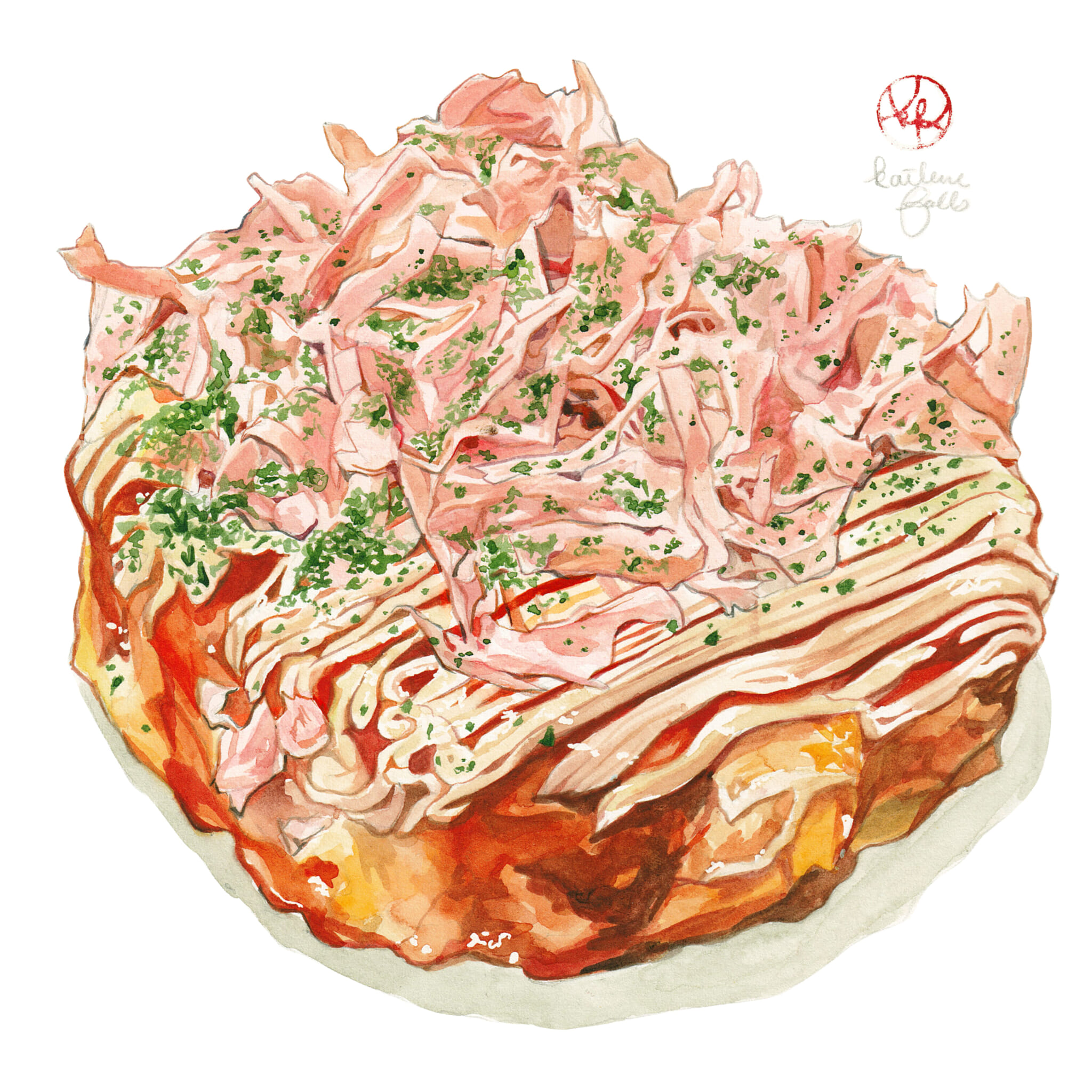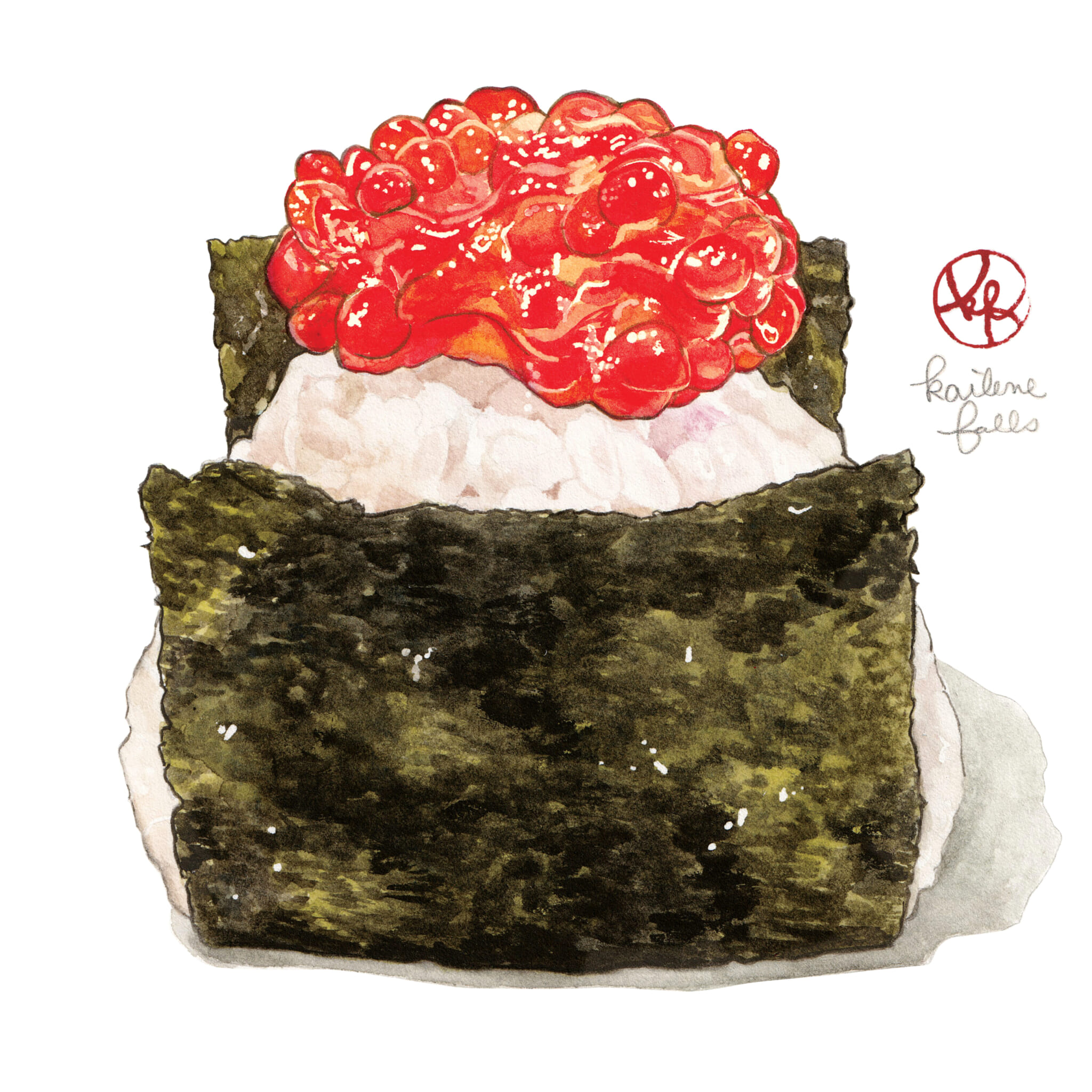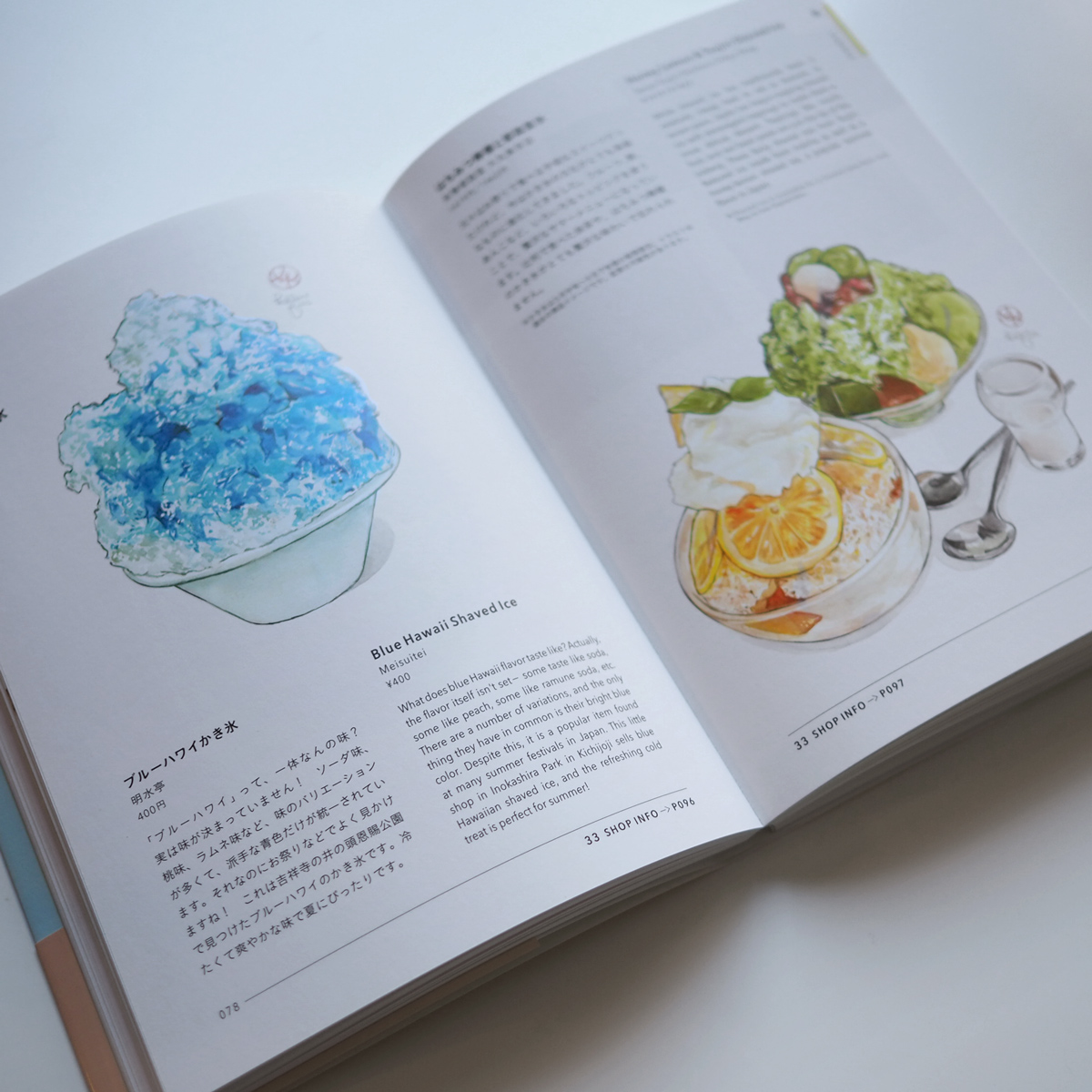Kailene Falls is a multidisciplinary artist but is perhaps best known for her luminous watercolor food art. Born and raised in Minnesota, Falls has spent the majority of her career doing commercial graphic design and illustration in Tokyo. Combining her artistic pursuits with TV gigs like Trails to Oishii Tokyo — another food-focused endeavor — her genuine interest in the subject is apparent. In 2022, she published the bilingual culinary art book The Wonderful and Delicious in Japan.
Were you always an adventurous eater?
Not at all! It wasn’t until I started to seriously think about moving abroad that I kind of forced myself to try new things. Growing up in the Midwest, I didn’t have much exposure to foreign cultures and cuisines, so I’m making up for that now.
Even though I’ve always enjoyed food, working as a food illustrator in Japan has opened my eyes and my palate to the subtle variations of flavors. It’s made me very aware of the attention to detail that Japanese people pay to food, especially visually. I’ve seen how food is such a fundamental part of Japanese culture and discovered how food can transcend language and country. I’ve begun looking at food as art, and I love the challenge of representing that art with my work.
How do you choose the foods you paint?
I started out only painting things that I came across by chance. But once I decided to specialize in food illustration, I became a food research fanatic. Of course, there are still times when I randomly happen across a lovely restaurant or café, but most of the time I do a lot of research beforehand.
One thing I love in particular is Japanese food magazines. There are so many publications that are stuffed with photos of beautiful foods and restaurants. So I’ll buy a magazine and use an app to save the locations of restaurants with foods I’d like to paint. Whenever I have an errand to run across Tokyo, I’ll check my map and go to a shop nearby that I’ve pinned.
How did the book The Wonderful and Delicious in Japan come about?
Food illustration started out as a hobby and a way to develop my watercolor skills. My first watercolor food illustration was a convenience store dango that I painted back in 2018. After that, I kept painting more and more, until I had hundreds of them. Soon after, I caught the eye of an editor at a publishing house here in Japan.
I wanted to share not just the beauty of the dishes I painted but also my own personal experiences associated with them. That was one of the reasons I wanted the book to be bilingual: I wanted to document my own personal journey while offering a broader cultural and historical context to my work. That way, it could be enjoyed by both domestic and international audiences.
What do you feel is your greatest challenge as an artist overall, and especially in Japan?
Despite Japan overflowing with creativity, the number of people that can support themselves on art alone here is pretty small. Most of the artists and illustrators I interact with do it as a side business.
The economy, of course, plays a big role in this. However, another issue is that people tend to pay less attention to the interior design of their living spaces. Rental apartments often ban putting any holes in the walls, which makes it difficult to customize a space with framed artwork. Plus, there isn’t a strong culture of inviting guests to your home for social gatherings. So, compared to the US, there is much less emphasis on the design of one’s personal living space. Therefore, it’s much less common to buy original artwork. Many Japanese people who buy my artwork tell me that they have never bought art before. Art is seen as something for the rich, so the idea of buying art is somewhat novel, making the overall market much smaller.
You mentioned that moving into food illustration was partly a way to improve your skills. How important is self-development within your craft?
Starting as a packaging designer and commercial illustrator was great for developing my overall skills, but because I was required to adjust to very specific criteria, I lost a sense of my own style and identity as an illustrator. Food illustration was my way of rediscovering myself as an artist while getting rid of some bad habits I’d picked up along the way. However, I don’t want to make the mistake of getting too comfortable and growing stagnant. In addition to painting Japanese food, I’m now dabbling in oil paintings of Japanese landscapes and traditional scenes —you can look forward to seeing new types of works from me in the future.
Find more of Kailene Falls’ work online and on Instagram and Twitter at @kailenefalls.













